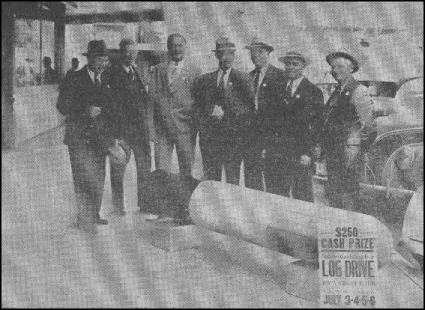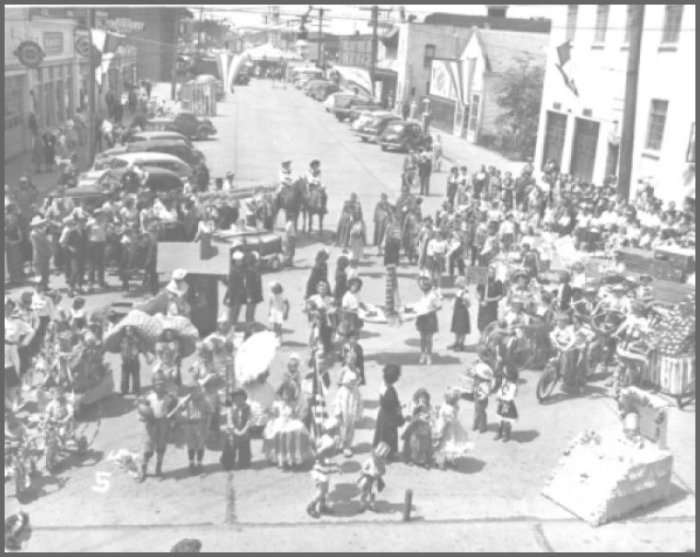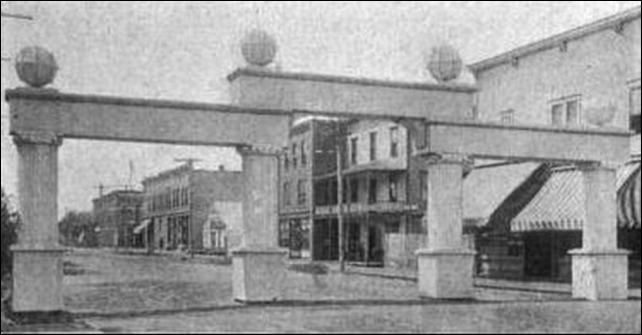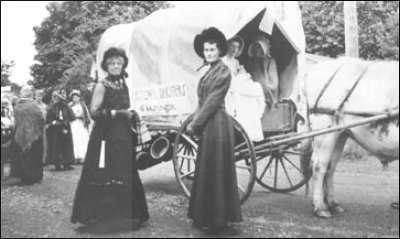Any time, any amount, please help build our travel and research fund for what promises to be a very busy 2011, traveling to mine resources from California to Washington and maybe beyond. Depth of research determined by the level of aid from readers. Because of our recent illness, our research fund is completely bare. See many examples of how you can aid our project and help us continue for another ten years. And subscriptions to our optional Subscribers Online Magazine (launched 2000) by donation too. Thank you.
 We recently visited our newest sponsor, Plumeria Bay, which is based in Birdsview, just a short walk away from the Royal family's famous Stumpranch, and is your source for the finest down bedding. See our Journal feature on this local business and learn more details and how to order items at their website. We recently visited our newest sponsor, Plumeria Bay, which is based in Birdsview, just a short walk away from the Royal family's famous Stumpranch, and is your source for the finest down bedding. See our Journal feature on this local business and learn more details and how to order items at their website.
|
By the time that my dad, Victor Bourasaw, headed up the Loggerodeo in the early '60s, the celebration was beginning to peak. Back in those heydays, the girls who competed for Loggerodeo queen knew that their title was more important than that of homecoming queen. The queen candidates sold tickets for the famous Log Drive, which had been inaugurated in 1940. The late Howard Miller and his wife, Frances Miller, recalled how Howard motored up to Marblemount at 4 a.m. and dropped the red, white and blue painted log from his boat into the Skagit. Ticket-buyers guesstimated the time that the log would take to float around obstacles on the way to Sedro-Woolley. Frances was elected Loggerodeo secretary in 1960 and continued in the post for more than 20 years. In 1962 Mayor Bill Pearson added some more spice to the event when he decreed that facial hair was necessary on men and dungarees and logging hard hats were the dress code. Loggerodeo vigilantes used to patrol the streets during the grand parade and "arrest" any violators of the beard rule or other improvised rules, throwing them into a makeshift hoosegow until they could pony up their bail.
At the grand parade, up to 10,000 people have attended annually to see more than 100 entries. By the '50s, entrants ranged from antique autos and logging trucks with first-growth logs, to marching bands and majorettes with legs from here to there and back again. I especially remember the floats because I spent five years working on them for my Skiyou 4-H club. We wore our knuckles down to the bone, sticking folded, died napkins into chicken mesh wire that was stretched over truck canopies. Parade watchers looked forward each year to see how many first-growth Douglas firs could be lashed onto the back of Janicki log trucks, and what new invention Skagit Steel would unveil.
TV reared its ugly head by the '60s, the first of many distractions that turned our heads from the Loggerodeo. By 1970, we were so incredibly hip in our sideburns and bell-bottom leisure suits that the annual celebration seemed old hat. By the '80s, some people actually vacationed away from town to avoid the crowds! Soon the malls and a full array of competing events relegated Loggerodeo to the background. The Sedro-Woolley Rotary Club stepped into the breech in the 1978 by launching a new event to capitalize on renewed interest in running. Local mill owner Bob Boyd designed a race on a 5.17-mile scenic route around by the river. That race still precedes the grand parade.
Wild women of Woolley (and a few good men)
By the '90s, new blood was needed. Strangely enough, the dominant attraction now is Geritol blood, pumping through the veins of the Wild Women of Woolley. This group started as a fun activity at the Senior Center for Sedro-Woolley women who were 55 or over. Limited to 35 members, the group became so popular that it was expanded to include Woolley Wannabes, women from outside the city, and A Few Good Men. Don't miss their variety act during Loggerodeo and many other times during the year.
More Loggerodeo history notes
- 1920: The American Legion Post 43 first got actively involved in the celebration in 1920. The post had just formed a year earlier and was named for George Baldridge, the son of a pioneer 1880s Hamilton family. He was the first local soldier to die in battle in World War I. The original Legion committee was headed by Percy "Puss" Stendal, who would become Sedro-Woolley's mayor two decades later. In the 1920s the annual celebration featured dances, speeches and concession stands. In addition, smokers were staged — boxing and wrestling matches that were marked by cigar smoke and blood and sweat, both inside and outside the ring.
- 1929: At the tail end of the Flapper Days, the American Legion took a leadership role in the Fourth of July celebration in May 1929. In 1931 the Legion organized the first countywide rodeo to supplement the traditional 4th events, thus bringing area ranchers and farmers into the fold.
- 1934: The Legion staged the first carnival in the old Union Mercantile building at the southwest corner of Ferry and Metcalf streets. Organizers of the events that year declared that the 4th celebration would be an annual affair.
- 1935: Donkeyball was introduced as a contest.
- 1938: The event goes into the black. Women were brought into the act, competing in nail driving and rolling pin throwing contests.
- 1939: A free barbecue is added, first staged at the corner of Metcalf and Gibson streets, at the southeast corner of the Skagit Steel property. The Dream Theatre, the temple of my youth, began offering a full day of free movies during the celebration. $500 in prizes for the 3-day rodeo. Another big event by that year was the kiddies and pet parade, which has survived to this day.
- 1940: George Hammer and six other businessmen christen a red-white-and-blue log for the first Skagit River Log Drive. For the next 60 years, the late Howard Miller used to organize the annual dropping of the log in the Skagit River at the steel bridge in Marblemount, and its journey down the river was timed. In former years, candidates for queen of the Loggerodeo used to compete by selling raffle tickets on which people could guess the time the log would take to arrive at Sedro-Woolley.
 | 1940 Log Drive contest
|
- 1941: Betty Wulff wins the revived Queen contest, and she is joined by Gertrude (Miller), surviving queen of the 1905 city contest.
- 1944: The Sedro-Woolley Riding and Racing Club forms. At that time, the rodeo was a separate event from the traditional 4th logging and patriotic events.
- 1946: The city council votes use of downtown streets for the festival, a bone of contention for decades. The baseball park on Metcalf (just north of our new city hall) was rented to realtor Porter LaPlant for the rodeo, which was organized by the riding club. The rodeo expanded to two days, including calf and trick roping; bronco, steer and bareback riding; and bulldogging. $1,500 in prizes awarded, including $150 to the best all-around cowboy. Jalopy races were also added that year, pre-Skagit Speedway. A smoker, or series of boxing matches, was added to the events that year, reviving the events that had marked the celebrations of the 1920s.
- 1948: The American Legion, prime organizer of the patriotic events, carnival concessions and logging contests, join with the riding club to combine all events under the umbrella of one celebration. So Loggerodeo was born. That year a street dance was also staged in front of the Legion Hall on Murdock, and continues annually as a highlight. The 1948 affair also marked the expansion of competitive logging events. Rules are codified for the Log Drive. Originally nearly 12 feet long, the log was eventually standardized at 8 feet with a 14-inch diameter. The log was dropped from the Marblemount bridge at 5 a.m. by a crew led by Howard Miller; they then followed it downriver in a motor boat to make sure it wasn't snagged. Raffle tickets were sold by queen candidates so local gamblers could guess how long the log would take to float down to the Clear Lake bridge. Depending on the depth of the river and obstructions, the trip took anywhere from 10-19 hours over the years. The Log Drive has been revived for 2000. Elaine Jones is the first Loggerodeo Queen.

|
This is a photo of the staging area for the first Loggerodeo Grand Parade, from 1948. We are looking west from the present Sedro-Woolley Museum. See Page 4 of the Loggerodeo section for details of the people and buildings.
|
Murder marred the 1950 Loggerodeo
- 1950: Al Lisherness becomes event president, the first of eight times for him. The riding club institutes a Rodeo Queen; Glenda Alrich was the first. By the mid-'50s the Rodeo Queen contest was thought to be redundant to the Loggerodeo Queen. Today it is a grand event.
- 1950: Events are marred by a murder on the day before the grand parade. Fred Elders, who had recently moved here from Polk county, North Carolina, got the week off from his job in the woods and prepared himself for the revelry by buying four quarts of whiskey, three cases of beer and five bottles of wine. On the day of the murder, he was in a state of inebriation that a witness at his trial called "singyfied." Henry Weaver had restored his 1918 Model-T Ford and went into Ikey Blackburn's B&A tavern at the corner of Metcalf and State streets to quench his thirst. He came out and got into his vintage auto and something incited Elders to slit his throat, instantly killing him. Elders almost got away with it but he returned to mingle with the crowd around the murder scene, was identified, arrested prosecuted and shipped off to the Walla Walla penitentiary.
- 1962: Mayor Bill Pearson added spice to the 1962 event when he and coordinator Vic Bourasaw revived the 1935 Hillbilly Days ordinance and decreed that local men let their facial hair grow and wear dungarees and logging hard-hats as part of a dress code.
- 1967: Longtime police chief Norm Lisherness died of a massive heart attack during the grand parade.
- 1970 Jack's Chainsaw, the predecessor of present Wood's Logging, introduced chainsaw carving, an event that has become the most important Loggerodeo event for collectors.
- 1974: Lance Sims, now a famous county auto dealer, led the "The Country" band for a street dance. Bob Cockburn, editor then of the old Sedro-Woolley Outlook weekly newspaper, was event president.
- 1975: As wrist wrestling became world-famous in Petaluma, California, a similar event was added here but did not catch on with the same fire.
- 1976: That bicentennial year was celebrated by the groundbreaking of the Sedro-Woolley Community Center on July 5, the last day of the event.
- 1978: The Great Footrace, which is still a key part of the 4th of July activities, was instituted under the leadership of Bob Boyd, local lumberman. He loved running and incorporated the unusual route's length because it was one of his favorite runs along the Skagit River.

|
Arches like these used to mark the entrance and the exit for the 4th of July Grand parade in Sedro-Woolley from 1900 onwards until an unknown year. This photo is from the December 1908 issue of The Coast magazine. The photographer was standing just below the S&N railroad tracks and looking south on Metcalf Street. An old-timer once told us that the remains of one of the arches was in a farmer's barn hereabouts, but he did not remember the name. Do you remember?
|
Links, background reading and sources
- Introduction to Sedro-Woolley's Loggerodeo, and Skagit County 4th of July celebrations back to 1876. Our Loggerodeo and 4th of July Portal Section, with links to all the Loggerodeo and 4th of July features.
- Photo tour of Sedro-Woolley, 1903, 4th of July, Osterman House Hotel, courtesy of Muriel Weissberg.
- Check Out Sedro-Woolley First page with full listings to all area stories, profiles and photo features.
Story posted on April 24, 2011 . . . Please report any broken links so we can update them
 Remember; we welcome correction & criticism. Remember; we welcome correction & criticism.
 Please report any broken links or files that do not open and we will send you the correct link. With more than 700 features, we depend on your report. Thank you. And do not give up if you find a link that seems to be closed. Just put the subject in the search box below. The story may have been moved to our new domain. Or just ask us and we will guide you to it. Please report any broken links or files that do not open and we will send you the correct link. With more than 700 features, we depend on your report. Thank you. And do not give up if you find a link that seems to be closed. Just put the subject in the search box below. The story may have been moved to our new domain. Or just ask us and we will guide you to it.
 Did you enjoy this story? Remember, as with all our features, this story is a draft and will evolve as we discover more information and photos. This process continues until we eventually compile a book about Northwest history. Can you help with copies or scans of documents or photos? We never ask for your originals. Did you enjoy this story? Remember, as with all our features, this story is a draft and will evolve as we discover more information and photos. This process continues until we eventually compile a book about Northwest history. Can you help with copies or scans of documents or photos? We never ask for your originals.
 Read about how you can order CDs that include our photo features from the first ten years of our Subscribers-paid online magazine. Perfect for gifts. Although it was delayed by our illness, it is due for completion in 2012. Read about how you can order CDs that include our photo features from the first ten years of our Subscribers-paid online magazine. Perfect for gifts. Although it was delayed by our illness, it is due for completion in 2012.
|
You can click the donation button to contribute to the rising costs of this site. See many examples of how you can aid our project and help us continue for another ten years. You can also subscribe to our optional Subscribers-Paid Journal magazine online, which celebrated its tenth anniversary in September 2010, with exclusive stories, in-depth research and photos that are shared with our subscribers first. You can go here to read the preview edition to see examples of our in-depth research or read how and why to subscribe.
|
|
You can read the history websites about our prime sponsors
Would you like information about how to join them in advertising?
 Our newest sponsor, Plumeria Bay, is based in Birdsview, just a short walk away from the Royal family's famous Stumpranch, and is your source for the finest down comforters, pillows, featherbeds andduvet covers and bed linens. Order directly from their website and learn more about this intriguing local business. Our newest sponsor, Plumeria Bay, is based in Birdsview, just a short walk away from the Royal family's famous Stumpranch, and is your source for the finest down comforters, pillows, featherbeds andduvet covers and bed linens. Order directly from their website and learn more about this intriguing local business.
 Oliver-Hammer Clothes Shop at 817 Metcalf Street in downtown Sedro-Woolley, 90 years continually in business. Oliver-Hammer Clothes Shop at 817 Metcalf Street in downtown Sedro-Woolley, 90 years continually in business.
 Peace and quiet at the Alpine RV Park, just north of Marblemount on Hwy 20, day, week or month, perfect for hunting or fishing. Park your RV or pitch a tent — for as little as $5 per night — by the Skagit River, just a short drive from Winthrop or Sedro-Woolley. Alpine is doubling in capacity for RVs and camping in 2011. Peace and quiet at the Alpine RV Park, just north of Marblemount on Hwy 20, day, week or month, perfect for hunting or fishing. Park your RV or pitch a tent — for as little as $5 per night — by the Skagit River, just a short drive from Winthrop or Sedro-Woolley. Alpine is doubling in capacity for RVs and camping in 2011.
 Check out Sedro-Woolley First section for links to all stories and reasons to shop here first Check out Sedro-Woolley First section for links to all stories and reasons to shop here first
or make this your destination on your visit or vacation.
 Are you looking to buy or sell a historic property, business or residence? Are you looking to buy or sell a historic property, business or residence?
We may be able to assist. Email us for details.
|
Did you find what you were seeking? We have helped many people find individual names or places, so email if you have any difficulty.
|
Tip: Put quotation marks around a specific name or item of two words or more, and then experiment with different combinations of the words without quote marks. We are currently researching some of the names most recently searched for — check the list here. Maybe you have searched for one of them?
|
Please sign our guestbook so our readers will know where you found out about us, or share something you know about the Skagit River or your memories or those of your family. Share your reactions or suggestions or comment on our Journal. Thank you for taking time out of your busy day to visit our site.
|

View My Guestbook
Sign My Guestbook
|
Email us at: skagitriverjournal@gmail.com

Mail copies/documents to Street address: Skagit River Journal, 810 Central Ave., Sedro-Woolley, WA, 98284.
|
|

 810 Central Ave.,
810 Central Ave., 




